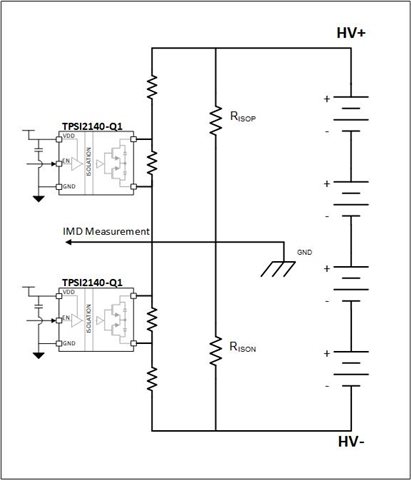Other Parts Discussed in Thread: TIDA-010232, , TPSI2072-Q1
Hi,
Customer refer design Guide: TIDA-010232 to insulation Monitoring, they system voltage need 1500Vdc max, but the design is for 400Vdc system,
Do you have an idea to choose the suitable RisoP RisoN, the equation is to complex.
customer's design exactly same with reference design.




